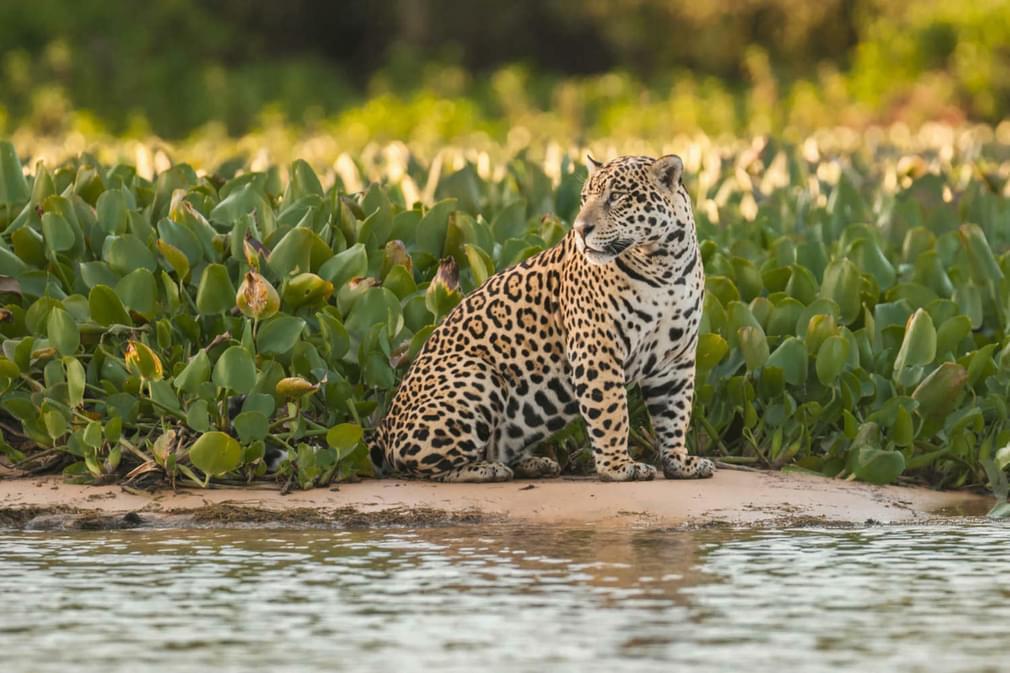Onçafari Project

Caiman Lodge in the heart of Brazil’s Pantanal wetlands is one of the most significant and largest conservation projects in the country. As part of its work, it is home to the Jaguar protection and monitoring group, Onçafari.
I was lucky enough to stay at Caiman in May, and to spend time with the jaguar team.
They have done incredible work, including the world’s first successful re-wilding of two orphan jaguars. They are hoping to open up a second project in the Amazon in order to protect more of these rare and beautiful animals.
Inevitably, the team faces many challenges. One of the biggest, strangely, seems to be with tracking the animals. At the moment, the only available option is to fit bulky and expensive tracking collars. These have a transmitter on one side and a battery pack on the other. The team then have the receiver, basically a hand-held arial which allows them to find the animals in the field with a range of approximately 1km. Once a day, the collar pings a location to satellite, allowing the team to build a heat map of jaguar behaviour, work out when they are giving birth, etc.
However, the collars are incredibly expensive (us7,000 a pop), heavy, of limited life (12 months if they are lucky before they automatically fall off). Even then, the collars are unreliable in an often soggy wetland environment. Approximately 50% of them seem to simply not work.
So, here’s my question to you my dear readers, a challenge. Surely there is a better solution?
Is there a reason we couldn’t simply reverse the process so that the animals are the receivers? That way the bulky power packs and transmitters are removed to be replaced with, presumably, something akin to a chip inserted under the skin.
The Pantanal has the great advantage of being very flat with almost zero construction. The only things which stand out are trees. Could transmitters not be placed in trees thereby protected from the wet, less conspicuous and accessible for servicing?
I know that chips in domestic pets are only readable from very close range. Is there not a means of ‘pinging’ over larger distances given relatively very clear lines of site?
I also appreciate that this would move things from an incremental cost per collar to a system whereby there would be a large capital expense but then relatively far smaller ‘on’ costs so there are funding questions. And the Pantanal is massive so the network would need to cover a large area but those are all details to discuss.
I really just want to understand if it is possible to flip the process on its head to create a more robust and sustainable tracking system for these beautiful animals and this dedicated team of scientists.
That’s it really. What I would love is to hear from people who have any understanding or knowledge of wireless communications, telecoms, even conservation. When I spoke to the team leader Lily about this, she admitted that there might be much better ways to track the jaguars, it’s just that they are researchers, not techies. In all honesty, they could invent time travel and these guys wouldn’t know about it for years.
This is where you come in, please. I would love to hear ideas and solutions for this problem.
Our Brazil holidays Get in touch Subscribe to The Pothole
The Pothole is Pura Aventura's popular monthly email. We share what we love, what interests us and what we find challenging. And we don't Photoshop out the bits everyone else does. We like to think our considered opinions provide food for thought, and will sometimes put a smile on your face. They've even been known to make people cry. You can click here to subscribe and, naturally, unsubscribe at any time.
The Pothole is Pura Aventura's popular monthly email. We share what we love, what interests us and what we find challenging. And we don't Photoshop out the bits everyone else does. We like to think our considered opinions provide food for thought, and will sometimes put a smile on your face. They've even been known to make people cry. You can click here to subscribe and, naturally, unsubscribe at any time.






